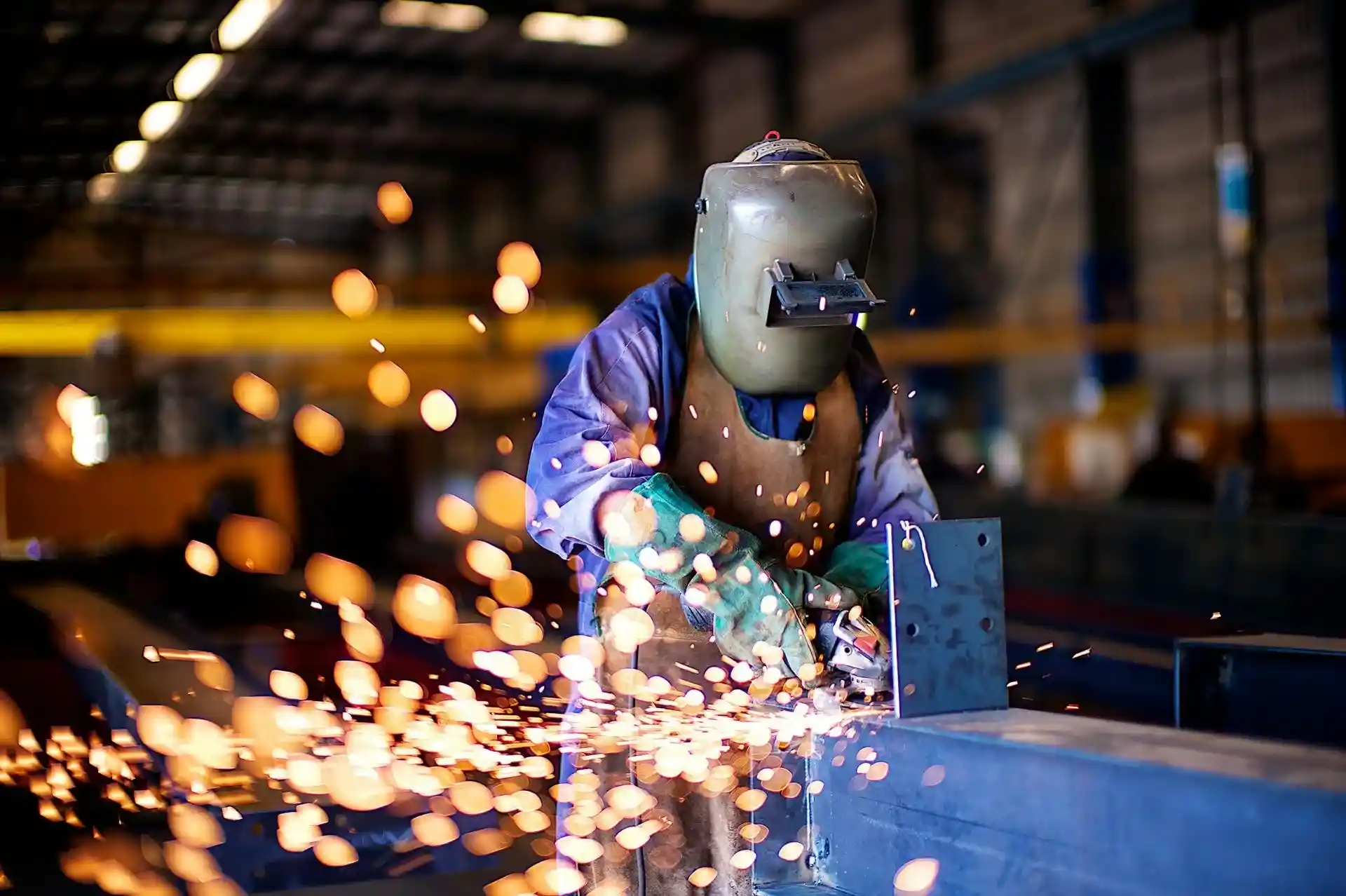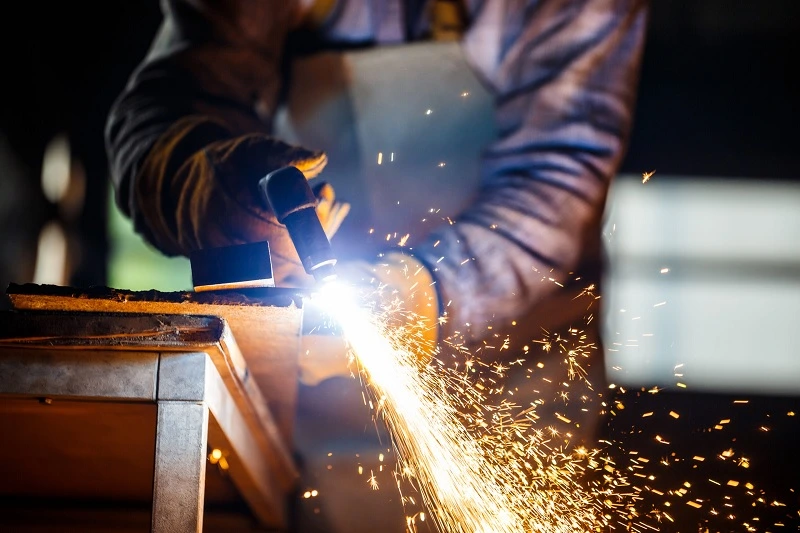
Metal cutting is the process of shaping or separating metal parts using specialized tools. It plays a vital role in industries such as construction, manufacturing, and automotive production. There are different types of metal cutting. Broadly, these methods fall into two main categories — cold cutting and hot cutting — each suited to specific applications. Choosing the right method depends on your material type, precision needs, and production scale.
In this article, we’ll explore how these metal cutting processes work, compare their advantages and disadvantages, and take a closer look at the most commonly used techniques in today’s industries.
Metals are used across various industries where cutting, shaping, and forming are essential parts of production. Depending on the type of metal, its thickness, the required precision, and the final purpose, manufacturers decide between hot cutting and cold cutting methods. Hot cutting techniques—such as plasma cutting, laser cutting, and Oxy-Fuel cutting—use high heat to melt and separate the metal, making them ideal for thick or hard materials. In contrast, cold cutting methods—including mechanical cutting, waterjet cutting, and sawing—operate without heat. They rely on pressure or abrasion to separate the material, which makes them suitable for parts that must not be affected by temperature changes.
| Hot cutting methods | Cold cutting methods |
| Oxy-Fuel Cutting | Mechanical (Sawing, Shearing) |
| plasma | water jet |
| laser | punchy |
As the name suggests, hot cutting is a process that separates or shapes metal using intense heat. In this method, thermal energy is applied to the material, causing it to melt or even vaporize at the targeted area. The molten metal is then removed from the surface using gas pressure or mechanical force.
The key difference between hot cutting and cold cutting lies in the role of temperature. In hot cutting, heat is the primary tool for separation, while in cold cutting, the process is performed without any heat input.
Common types of hot cutting methods include:

The most traditional method for cutting hot metal is oxy-fuel cutting, which uses a combination of oxygen and fuels such as acetylene, propane, or methane to melt the metal. In this process, temperatures can reach up to 1,800 °F, making it possible to cut metals of considerable thickness. This technique is especially useful for construction work, cutting thick steel plates, or working in locations where electricity is not available.
Advantages:
Disadvantages:

Plasma cutting allows most conductive metals to be cut with ease. The process uses a high-velocity jet of ionized gas that can reach temperatures up to 20,000 °F, making cutting metals extremely efficient. Plasma cutting is widely used in industrial workshops and production lines for conductive metals such as steel, aluminum, copper, and brass.
Advantages:
Disadvantages:
Laser cutting is the most advanced and precise technique in the hot cutting family. A focused laser beam can cut through metal with ease, offering high efficiency while consuming relatively little energy. Its standout feature is exceptional precision, making it ideal for industries such as automotive, aerospace, and the production of intricate or delicate parts. However, metal laser cutting precision comes with a higher cost compared to other cutting methods.
Advantages:
Disadvantages:
Cold cutting refers to methods of cutting metal without applying heat. Since high temperatures can alter the structure of metals, cold cutting is used for parts that must retain their original shape and metallurgical properties. In these methods, metal is separated using mechanical force, pressure, or abrasion, leaving its physical and structural properties intact.
In mechanical cutting, the metal is placed between two cutting blades and separated using either a single powerful blow or continuous movement. Tools such as guillotines, saws, and shears are commonly used to cut steel, aluminum, and copper sheets. Depending on the thickness and type of metal, different blades may be used, including diamond-tipped blades or cutting discs. This method is generally more suitable for thin sheets. However, mechanical cutting is not highly precise, which limits its use in critical or high-precision industries.
Advantages:
Disadvantages:
Although cutting metal with water may seem unusual, it is a real and widely used process — and actually one of the most precise methods of metal cutting. Waterjet cutting uses a high-pressure stream of water, often mixed with abrasive particles such as garnet, to cut metal without heat. This preserves the metal’s structure and provides micron-level precision, making it ideal for aerospace, defense, and other sensitive industries.
Advantages:
Disadvantages:

Punching works much like punching paper. In this method, the metal sheet is placed between a die and a punch, and the desired part is separated with a sudden, controlled push. Punching is especially useful for mass production of parts with repetitive shapes, such as appliance housings, electrical panels, or automotive components.
Advantages:
Disadvantages:
Hot and cold cutting methods have distinct advantages and limitations depending on the application. Hot cutting uses high temperatures to melt and separate metal, as in plasma, laser, or oxy-fuel cutting. This approach is fast and suitable for thick metals, but it can cause discoloration, warping, or changes in hardness in the heat-affected zone.
Cold cutting, in contrast, avoids heat. Mechanical tools such as saws, shears, guillotines, or water jets use force or high-pressure water (sometimes with abrasives) to remove metal. Cold cutting preserves the metal’s physical and metallurgical properties, provides smoother edges, and offers higher accuracy. When surface quality and precision are more important than speed, cold cutting is usually the preferred choice.
| Feature | Hot Cutting | Cold Cutting |
| No | Yes (melts metal) | No |
| Suitable Metal Thickness | Medium to thick | Thin to medium |
| Edge Quality | May require finishing | Smooth, precise |
| Effect on Metal Properties | Can cause warping, discoloration, thermal hardening | Maintains original structure and properties |
| Speed | High | Moderate to high |
| Typical Methods | Plasma, Laser, Oxy-Fuel | Mechanical cutting, Waterjet, Punching |
| Best Use Cases | Thick metals, fast cutting | Heat-sensitive metals, precision parts |